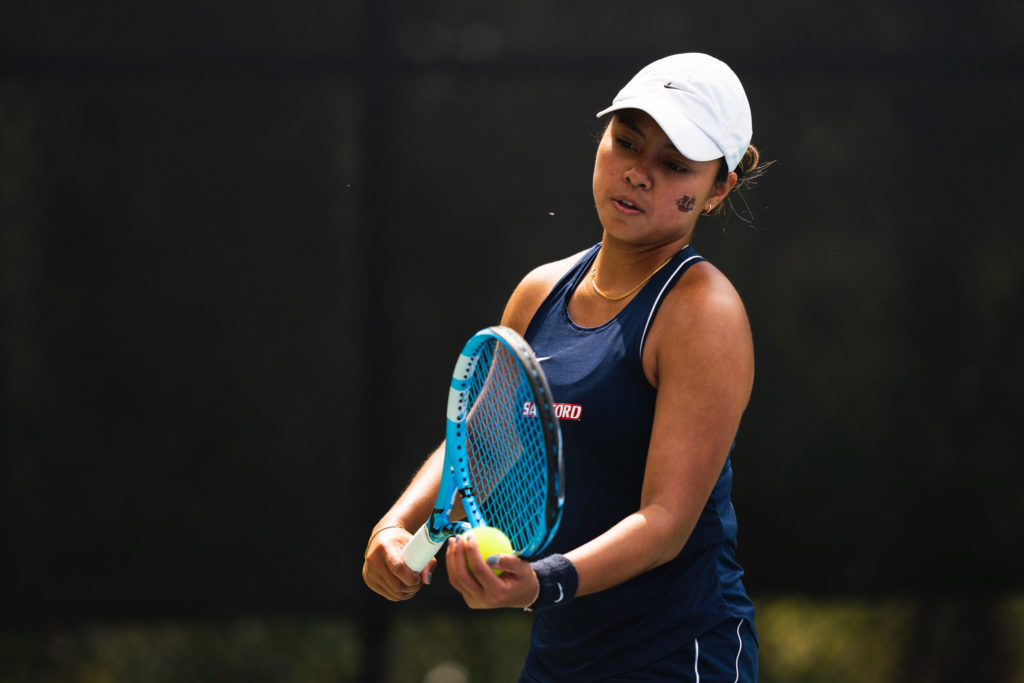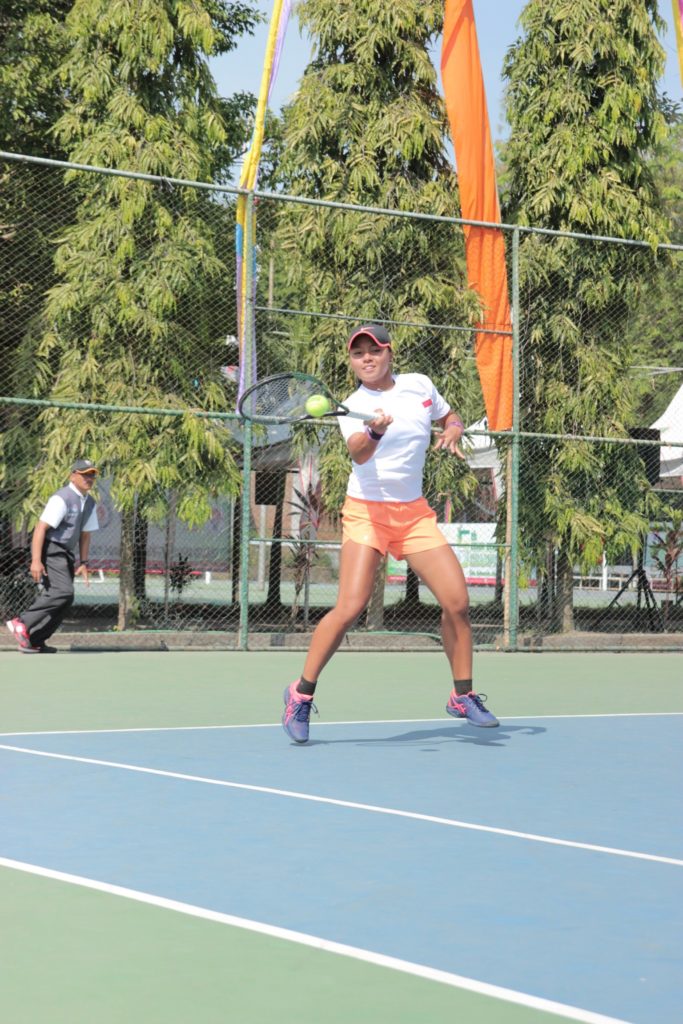
By: Ally Hayduk, Bulldog Blitz
Leaving home at 18 is hard enough, making the transition to college proves to be a challenge many have a hard time facing. Now on top of that add a 12 hour time change, a completely new culture and a new language you have to use for all communications. The life of an international student athlete is just that.
Samford women’s tennis player Samantha Nanere provides an insider’s perspective of this transition and the life one lives throughout and after their college career.
Coming to the United States

Nanere grew up in the town of Bandung, Indonesia. She played tournaments across Asian and European countries but never visited the United States until her first year of college. Originally playing at Winthrop University, Nanere knew nothing of the culture and the typical happenings around an American University- she had to learn on the job.
“Coming to here was definitely a culture shock for sure,” Samantha Nanere tells us…
“my first year was definitely challenging… there was a lot of mental breakdowns ”
An international student’s first few weeks can be extremely difficult.
Language barriers
For most international student athletes, English is taught to them in school but never a focus. Allowing them to have an understanding of the language but not a concrete foundation for it. Nanere told us how she learned English in primary and secondary school, but had a hard time physically speaking the language. She knew translations from Indonesian to English but had a hard time holding a conversation.
Traveling for tournaments, Nanere communicated to her opponents in English but only a few words at a time (in tennis only a few key words and phrases are used to communicate to the opponent). Knowing words like “out,” “in,” and “what is the score?,” will only go so far when your college intro to accounting lecture is taught completely in english. Speaking English can be very uncomfortable for those who do not feel confident in their understanding of the language.
“I was really uncomfortable with speaking the language at first … but now I even dream in English,” Nanere stated.

Being away from family
Not only do these international student athletes have to speak in a language other than the one they grew up with but they also go through the experience alone.
In Samantha Nanere’s case her family lives almost 10,000 miles away. Her family has only visited her once in the three years she has lived in the U.S. Not being able to call family at a moment’s notice due to the 12 hour time difference.
“Most of the time I can only call my mom once a day at max … the time change makes it very difficult to talk,” Nanere stated.
As a way to form new relationships and different support systems, International student athletes typically find comfort in the families of others.
“For most home is only a couple hour drive away, for me it’s a 24 hour flight”
For most holidays, and even summer break, going back to their home country is unrealistic. Travel may take several days. Connecting flights in numerous countries. Having to work through customs. It all can be very overwhelming.
Many international student athletes opt to spend these breaks from campus with friends and their friends’ families.
“Since you are so far away you make bonds with people a lot faster and their families kinda take you in as their own,” Nanere explained
Samantha Nanere is a senior in college and has only gone back to Indonesia twice since coming to university.
She has spent summers, thanksgivings and even Christmas’ with her teammates’ families.
Challenges with visas
A life such as this leads these young adults to exceed their age in wisdom. They are forced to grow up much faster than their American counterparts.
In order to just get to the U.S. they have to perform leaps and bounds. Piles of paperwork and trips to their country’s embassy only scratch the surface on what must be done for an international to attend an American university.
“My school’s first language was Indonesian, so I had to translate my transcripts into English myself,” Nanere said with a heavy sigh.
Just getting into the country is hard enough let alone managing a student visa.
International student athletes not only face the typical pressures of their native born counterparts but also worry over the lifespan of their time in the country.
“You only get about three months post-grad before your visa expires and you get deported,” Nanere went on to say, “the pressure is definitely there, no matter what year you are.”
With the rise of Name Image and Likeness (NIL) within the NCAA the issue has also risen that international student athletes are not allowed to participate in the program.
“It’s contradictory, I’m here for a student visa and NIL is a program for student athletes… America is known for their open opportunities and they are drawing a line in what we can and cannot do,”Nanere said.
With the student visa, internationals are not allowed to earn money. If they were to engage in any form of communication regarding a NIL deal their scholarships and student visa could be revoked.
Athletic Career
In her first year, at Winthrop University, Samantha posted a spring record of 4-7 before ending the season early due to the Covid-19 pandemic.
After transferring to Samford University for her sophomore season, Nanere posted a record of 12-8 in singles, helping the team reach the final four of the Southern Conference tournament.
For her third season, second as a bulldog, Nanere posted a record of 22-11in singles, receiving honors from the Southern Conference:
- Player of the week 9/15/2022
- Second Team All-SoCon Team Singles 2022’
- Southern Conference Academic Honor Roll 2022’
“My collegiate career and game has definitely evolved over the years and I am grateful for what Samford has done for me,” Nanere added.
To watch some of Samantha Nanere’s Highlights from the spring of 2022 please visit the Samford Sports Youtube.
To learn more about the international student athletes experience, visit the international student affairs website




